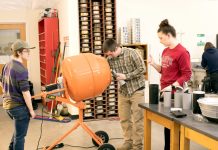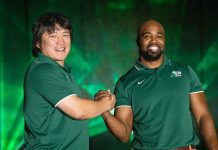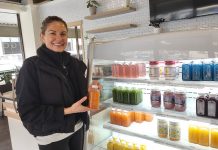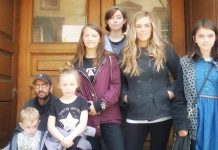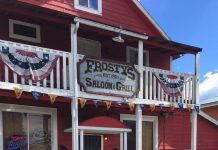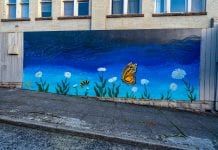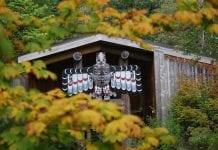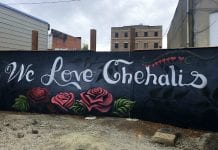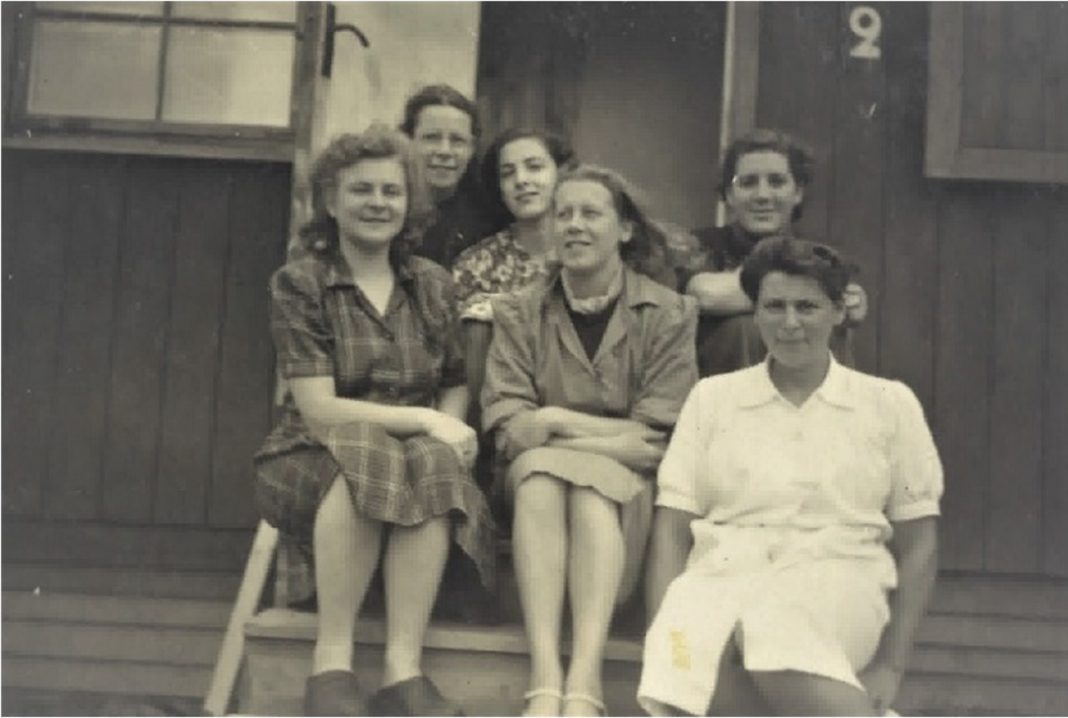Recently, Centralia resident Ine-Marie van Dam captivated an audience of middle and high school students at Centralia Christian School with the incredible story of her mother Ada van Dam, a Dutch Jew who survived Auschwitz Death Camp during the Holocaust.
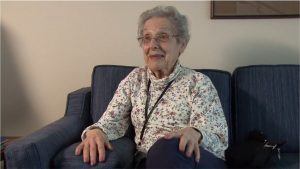
“From a young age, I knew my mom had gone through the Holocaust, but she never talked about it,” van Dam explained. Years later, she urged her mother to tell what had happened “for the grandchildren.” Her mother, Ada van Dam (née van Esso), reluctantly agreed to be videoed, although she did not think anyone would be interested. She was wrong. Ada’s story told in her sweet Dutch accent and straightforward manner would captivate both young and old.
With the help of the Holocaust Center for Humanity, Ada’s memories were captured on film, with poignant glimpses of a happy childhood cut short by the atrocities of the Holocaust. Through extensive research, her daughter Ine pieced together more details of her mother’s incredible journey from Holland, to Auschwitz and Ravensbrück, and eventually to the Pacific Northwest. Realizing the impact of her mother’s story, Ine trained as a Legacy Speaker and began sharing Ada’s experiences through their Speakers Bureau.

Ine’s first speaking engagement was at Centralia High School a few years ago. Since the pandemic started, Ine has only spoken to groups virtually. Centralia Christian School is the first place she has visited in-person in over two years, and she was delighted to again share her message to young people from her hometown.
Ine introduced the students to her mother and her grandparents through precious family photographs that were kept safely hidden with friends during the war. Her first slide showed a picture of her mother Ada as a young girl “with the requisite bow in her hair.”
“This is my mother. She grew up in Meppel, Holland,” Ine said. Then, using other family photos, she painted a picture of Ada’s life before the war. Next, clicking onto a map of Europe, she pointed out how close Meppel was to the German border.
“When my mother was still a child, my grandfather became increasingly aware of the Nazi threat to Jews. Attitudes were changing, not only in Germany across the border but also frighteningly close to home. After my mother’s playmate refused to play with her because she was Jewish, he and my grandmother decided to move the family 85 miles to Amsterdam to get far away from the border.”
But it was not far enough.
Although Amsterdam had a large Jewish population, it could not protect them from what was coming. Shortly after the occupation began, Jews became a prime target, and soon Ada and other Jewish children were forced to leave neighborhood schools and made to attend schools for Jewish children only. Ironically, Ada attended the same school as Anne Frank, but the two girls never knew each other.
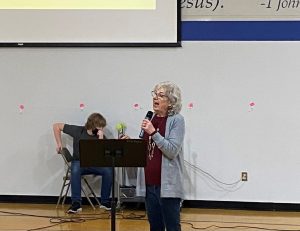
As antisemitic persecution in Holland ramped up, many Jewish families split up and went into hiding. Not wishing to separate his family, Ada’s father bribed officials to smuggle his family into Switzerland. But the family was betrayed. “It was totally crooked,” said Ada in one of the video clips shared during the presentation. “…somebody…took all the money and saw to it that we were all put in prison.”
Instead, the same trains that they hoped would take them to freedom delivered them to the enemy. Ada and her family went first to a prison in Berlin and then were deported to Auschwitz, an extermination camp in Poland. It was the spring of 1943.
“How many of you are fifteen?” Ine interrupted her story and looked directly at the students. Several hands went up. “That’s how old my mother was when she arrived at Auschwitz.”
Even in her 90s, Ine’s mother could still remember “The Selection.” In another video clip, Ada shared how with a simple gesture, the doctor looked at each prisoner and decided their fate. “One (way) meant to the camp, and the other meant to the gas chamber. But we didn’t know that.”
Ada, at age 15 and her mother at 39 years old, were selected for the camp. Later, she found out that most women 14 and under or 40 and over, including mothers with young children, were sent directly to the gas chambers. Had Ada been one year younger or her mother one year older, the doctor’s thumb would have pointed the other way.
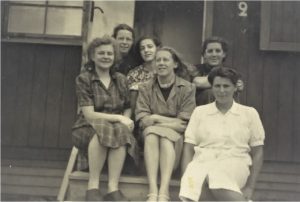
While in Auschwitz, Ada was assigned to work in the laundry room. That work detail most likely saved her life. The building was downstairs and protected from the harsh weather.
“I worked where we had to do the washing…and when we were washing, we tore it (a Nazi uniform) because it would be work for the people who had to fix it. You know, so you did things. Whatever you could,” Ada recalled. It was little acts of resistance like this that gave other prisoners one more day of work and another day of life, Ine explained to the students.
In 1945, as the Allies advanced, the Nazis emptied Auschwitz and forced prisoners to walk hundreds of miles in the dead of winter across the border into Germany. Starved and frozen nearly to death, Ada barely survived the infamous “Death March” to Ravensbrück, but she knew she had to prove she was capable of working if she wanted to stay alive.
Though weak and emaciated, Ada managed to convince the guard she could work. He motioned her inside the gates of Ravensbrück. There, Ada was forced to do farm labor before finally being liberated a few months later. She weighed only 60 pounds when she was rescued and taken to Sweden to recover. Sadly, Ada’s mother, father, and older brother did not survive the camps.
She was on her own.
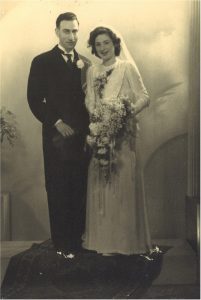
Ada returned to Holland, where she finished her schooling and married her husband, Hans van Dam. Hans, another Dutch Jew, had survived the Holocaust by escaping into Spain with the help of the Resistance. He eventually made his way to England, enlisted in the Free Dutch Forces and returned to help liberate Belgium and Holland.
Not long after their daughter Ine was born, Hans moved his young family to the Dutch Caribbean Island of Curaçao while they awaited visas to the United States. When Ine was nine, her family moved to Seattle, where she and her siblings learned English. But she never forgot her Dutch roots and her love for languages and different cultures. Fluent in several languages and a conference interpreter, Ine moved to Centralia twelve years ago to teach French, Spanish and German at Centralia College. Today she continues to work as a conference interpreter.
Ine began telling her mother’s Holocaust survival story as a Legacy Speaker with the Holocaust Center for Humanity in 2019. She incorporates video testimony, family photographs, maps, and other primary source documents into her presentations.
Ine’s favorite part of the presentations is the question-and-answer time in the end. She was not disappointed. Hands shot up, and students peppered her with questions about her mother’s experience in the camps, her father’s escape and work with the Resistance and even her own perspective as a child of Holocaust survivors.
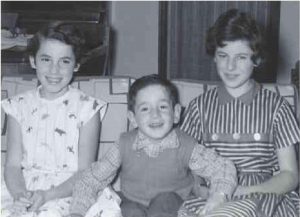
Ada van Dam once thought no one would be interested in her story. Thank goodness her daughter thought otherwise! Following Ine’s visit to their school, students wrote letters sharing what a difference her mother’s story had made:
“It feels so much more real to hear a story like your mother’s from someone standing right in front of you.”
“You changed the way I think of the Holocaust.”
“I thought that the story of your father was the most interesting. You said that he was a Boy Scout. I could understand his story better because I am a Boy Scout, too.”
“I appreciate that you were willing to tell us terrible things so that hopefully nothing similar will happen again.”
“I just wanted to tell you, keep doing what you’re doing. You are definitely making an impact in many kids’ lives!”
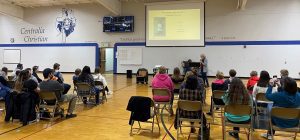
Although Ine’s mother, Ada van Dam, passed away last year, her incredible story lives on, challenging and inspiring a new generation.
For more information about Ada’s life or to request Ine van Dam as a speaker, contact The Holocaust Center for Humanity in Seattle.









